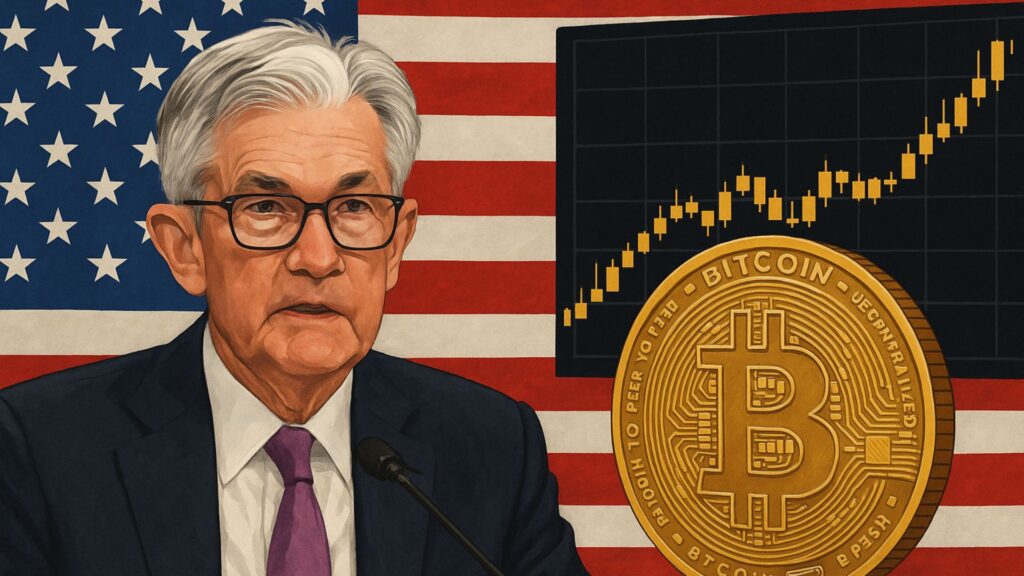The Federal Reserve’s May policy meeting minutes reveal a cautious stance amid rising inflation and early signs of labour market weakness. Officials kept rates unchanged, but their discussion points to a more complicated future.
With inflation not easing as expected and bond market volatility rising, policymakers now face the challenge of choosing between protecting price stability and responding to economic softening.
The outcome remains uncertain, and patience is the preferred position for now, but the room for manoeuvre is narrowing fast.
Inflation Concerns and Labour Market Worries
On May 28th, it was published that members of the Federal Open Market Committee chose to leave interest rates unchanged during the 6 and 7 May meeting, but the tone of their conversation reflected increasing concern.
Almost all participants warned that inflation could remain higher than expected, especially if import tariffs proposed by the Trump administration take effect in full.
Although these tariffs were postponed shortly after the meeting, their initial announcement had already caused unease, with bond yields rising and investor confidence weakening.
The committee acknowledged that the US economy might be entering a more fragile phase. The combination of price pressures and potential softening in the job market introduces a situation in which traditional policy responses may not be sufficient.
Normally, rising unemployment would prompt a cut in interest rates to support growth, but if inflation remains above the Fed’s target, loosening policy could be risky. This is the tradeoff the Fed is now openly discussing.
The minutes also reveal that Fed staff presented updated forecasts showing a higher probability of recession than in previous meetings. Financial market volatility, particularly in the bond market, was cited as an area requiring continued monitoring.
Officials noted that a sustained shift in investor perceptions of the US dollar as a safe-haven asset could have long-term consequences for financial stability, especially if combined with further increases in Treasury yields.
These factors leave the Fed in a difficult position. Policymakers are expected to support both stable prices and full employment, but those goals could come into conflict.
Choosing to address one could make the other worse. That is why the committee ultimately decided to hold rates steady, preferring to wait for more data before committing to a policy shift.
The current stance is not one of confidence but of caution. With economic signals pulling in different directions, the Fed is preparing for several possible outcomes.
While no member pushed for immediate rate changes, the shared concern about inflation and employment is shaping a more uncertain tone going forward.
Unchanged Rates But No Clear Direction
What emerged most clearly from the FOMC minutes is not a bold new policy shift, but rather a deep sense of hesitation. The Fed chose to do nothing for now, but not because conditions are stable.
On the contrary, officials are divided, the economic picture is clouded, and the risks are becoming harder to manage. The absence of a clear path forward reflects how uncertain the outlook has become.
There is growing concern about the role of fiscal policy, particularly the trade tariffs. While the worst of the proposed measures were paused, the possibility of sudden implementation still hangs over the economy.
These trade-related costs, if realised, would likely add upward pressure on prices at a time when consumer sentiment is already fragile. Policymakers understand that reacting too slowly or too quickly could both carry consequences.
The bond market remains a key area of focus. Rising yields, driven by uncertainty rather than clear economic growth, suggest that investors are repositioning defensively.
This kind of movement is not only a reflection of inflation concerns, but also of doubts about long-term economic stability. If this continues, it could tighten financial conditions even without any change from the Fed.
There is also the question of how long the Fed can continue to wait. Patience might provide space for economic clarity, but it also increases the risk of being caught off guard.
If labour market data begins to show more persistent weakness while inflation refuses to fall, the Fed will have fewer options. Moving in either direction could fuel criticism and market disruption.
The minutes showed more attention than usual to financial stability. Some members raised the possibility that asset price fluctuations and liquidity issues might require policy responses separate from those aimed at inflation or employment. This signals a shift in focus, one that recognises the complex reality facing the US economy in 2025.
All of this suggests that the Fed is no longer operating in a cycle with clear rules. Past patterns of easing during slowdowns and tightening during recoveries no longer apply in the same way.
Today’s environment is shaped by overlapping pressures, including trade uncertainty, geopolitical instability, and structural shifts in labour and housing markets. These are not challenges that can be solved with one policy move.
Conclusion
The May FOMC minutes reflect a Federal Reserve that is increasingly aware of the limits of its tools.
Inflation is proving more stubborn than expected, and early signs of job market weakness are beginning to surface. Policymakers are caught between two outcomes that both demand different responses.
Rather than act prematurely, they have chosen to observe and wait, but with full awareness that time may not be on their side.

